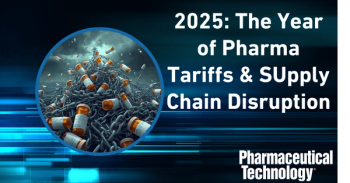
- Pharmaceutical Technology-06-02-2017
- Volume 41
- Issue 6
Decoding Serialization Regulations
The author discusses upcoming serialization and transaction data collection regulations including the US Drug Supply Chain Security Act, the European Union Falsified Medicines Directive, and the EU Delegated Regulation.
Multiple serialization and transaction data collection regulations are coming into effect within the next couple of years, as mandated by the US Drug Supply Chain Security Act (DSCSA) (1), the European Union (EU) Falsified Medicines Directive (FMD) (2), and the EU Delegated Regulation (DR) (3). The DSCSA, FMD, and DR were developed to overcome the escalating issues of counterfeit drugs within an interconnected and evolving supply chain, to ensure safety, quality, and efficacy.
These landmark regulations are ambitious in two ways: their aggressive, international scale and the requirement to track product identifiers with electronic tracking and tracing systems. For biopharma companies looking to remain globally competitive, evaluation of current quality and documentation systems ahead of deadlines for implementation and compliance is crucial. With these directives, it is imperative that companies understand their supply chain and their individual responsibilities within the supply chain as the scope of the FMD/DR and DSCSA widens, and that companies anticipate future needs.
The DSCSA
Signed into law by former President Barack Obama in 2013, the DSCSA is aimed at increasing supply chain traceability, verifying the legitimacy of drugs, and streamlining recalls. Title II of the DSCSA introduces serialization standards and the recordkeeping requirements for electronic transaction data capture. A multiple phased rollout of the DSCSA began in 2015 and, over an eight-year period, will be fully implemented by 2023.
In 2015, all US trading partners were required to be licensed under FDA. Thereafter, manufacturers, repackagers, and distributors were expected to begin exchanging lot-based documentation. By Nov. 17, 2017, manufacturers must start adding unique serial numbers to each product and must electronically submit transaction documentation.
FMD and Delegated Regulation (DR)
The FMD and DR were passed to combat the scourge of counterfeit pharmaceuticals plaguing the EU (4). This regulation gives companies until February 2019 to start serializing products, recording transactions as each product moves through the supply chain, and verifying the legitimacy of the products.
The EU allows each member state to add additional “data elements” beyond the minimum as they see fit. These regulations focus on requiring the use of anti-tampering devices on containers such as seals to further ensure that a drug has not been compromised, as well as mandating certification of online pharmacies/retailers. Online pharmacies and retailers must display an EU-wide, member state assigned, data-embedded logo on their websites and products for verification purposes.
Comparing the FMD/DR and DSCSA
The FMD, DR, and DSCSA do not require use of a specific serial number system. The DSCSA does allow manufacturers to add a unique serial number to their National Drug Code (NDC) number to form a serialized NDC. This format poses limitations, as it is only applicable within the United States. To internationally export, US companies would need to use a separate product identification system. GS1’s Global Trade Item Numbers (GTIN) and the Electronic Product Event Data (UPCIS) systems come widely recommended because of their wide breadth.
In order to take advantage of the benefits of GTIN, companies must first register with GS-1.
Each directive requires that manufacturers and repackagers label each lot with unique serial numbers in a barcoded format for event recording, verification, and for data recordkeeping. Mandated information for collection is shown in Table I.
The FMD and DR refer to verifying received products as “commissioning.” Commissioning requires checking the anti-tampering elements, uploading the serial numbers, and comparing recorded data to repositories managed by the European Medicines Verification Organization (EMVO).
Decommissioning an individually packaged product removes its serial number from the supply chain, and this is only done if a product is lost, destroyed, stolen, or consumed. Per the DSCSA, as a product progresses through the chain and changes hands, additional records are needed:
- Transaction Information (TI), which includes production information about the drug and the transaction
- Transaction Statement (TS), a statement that certifies the accuracy and completeness of the data
- Transaction History (TH) a history of previous transactions.
Currently, there are no provisions within the DSCSA necessitating the commissioning or decommissioning of individual products. In 2023, following implementation of the Enhanced Drug Distribution Security (EDDS) regulations, this could change.
Companies must also institute a serialization system that provides immediate compliance and is flexible enough to achieve future goals; they should strive to plan, organize, and analyze compliance gaps, and evaluate possible solutions. Each company must identify its priorities, expectations, and timelines with cross-departmental input before exploring the technology best suited to its goals.
References
1. FDA,
2. The EC, Backgrounder on Falsified Medicines and the FMD, ec.europa,eu, www.ec.europa.eu/health/human-use/falsified_medicines_en
3. The EC,
4. D. Buckland, “
Article Details
Pharmaceutical Technology
Vol. 41, No. 6
Pages: 64
Citation
When referring to this article, please cite it as K. Waters, “Decoding Serialization Regulations,” sidebar to “Synchronizing Anticounterfeiting Efforts,” Pharmaceutical Technology 41 (6) 2017.
Articles in this issue
over 8 years ago
Control Box Connects Lab Sensors and Pumpsover 8 years ago
Planetary Dispersers with PLC Recipe Controlsover 8 years ago
Paperless Recorder Shortens Sampling Intervalsover 8 years ago
Sterilizer Uses Pulsed Light Technologyover 8 years ago
Boosting Bioproduction Workflows with Automation Technologiesover 8 years ago
Synchronizing Anticounterfeiting Effortsover 8 years ago
New and Updated Laboratory Equipment Optimize Efficiencyover 8 years ago
Understanding Dissolution Testingover 8 years ago
Particle Size Reduction for Investigational New DrugsNewsletter
Get the essential updates shaping the future of pharma manufacturing and compliance—subscribe today to Pharmaceutical Technology and never miss a breakthrough.




